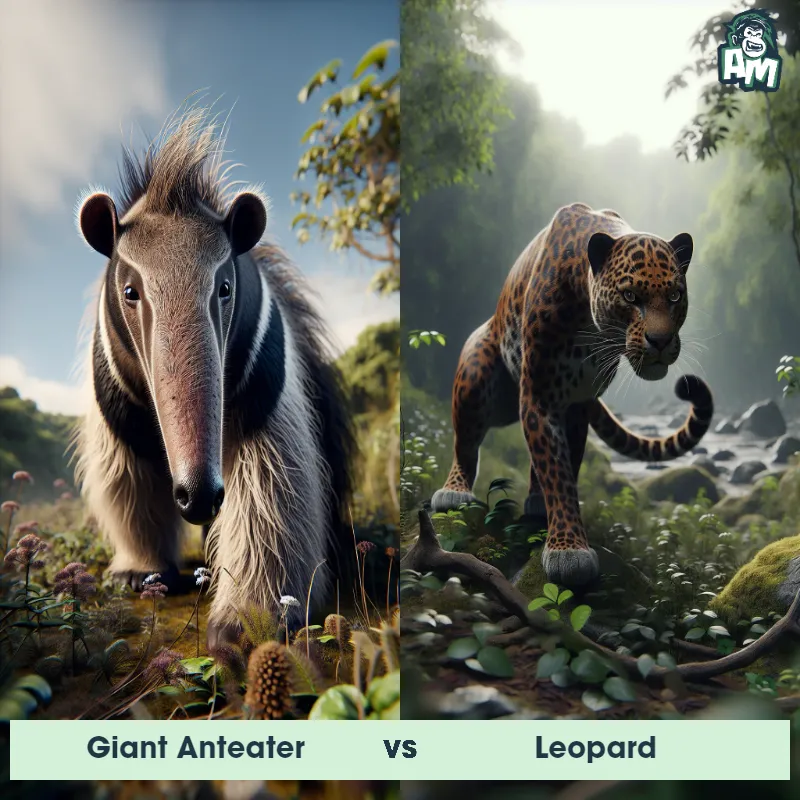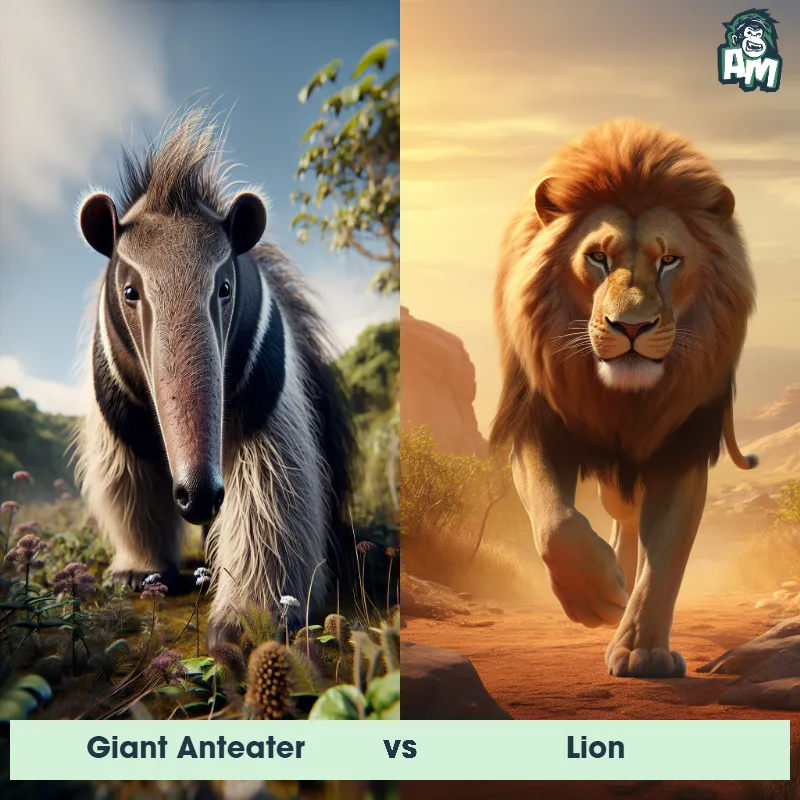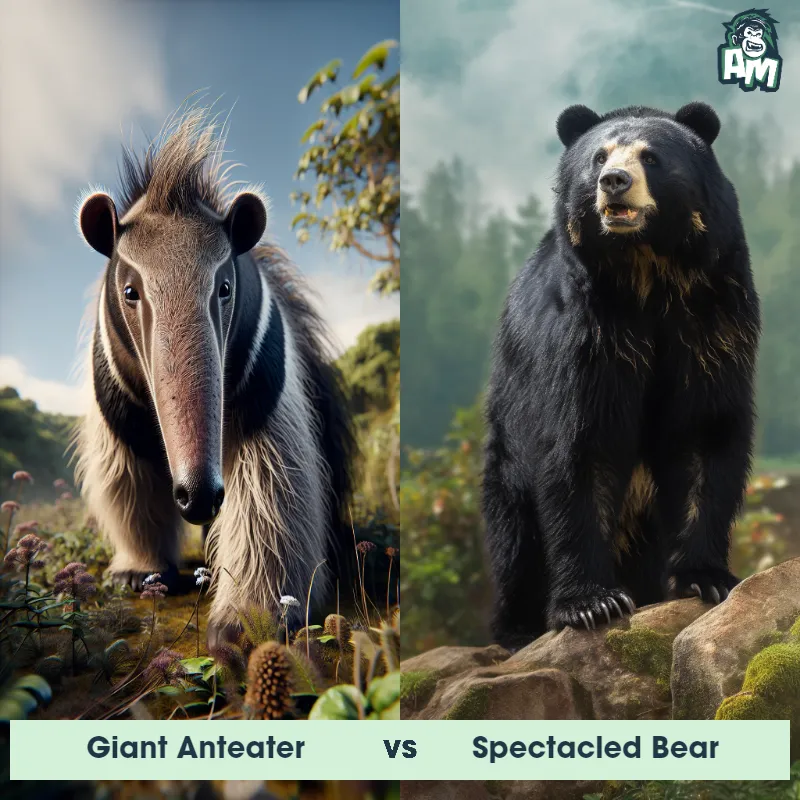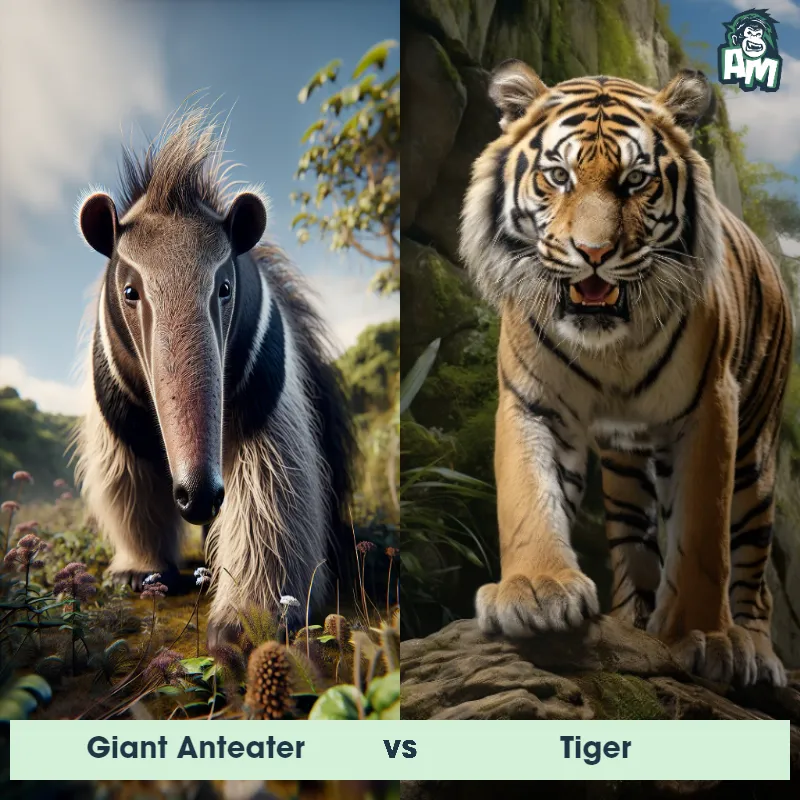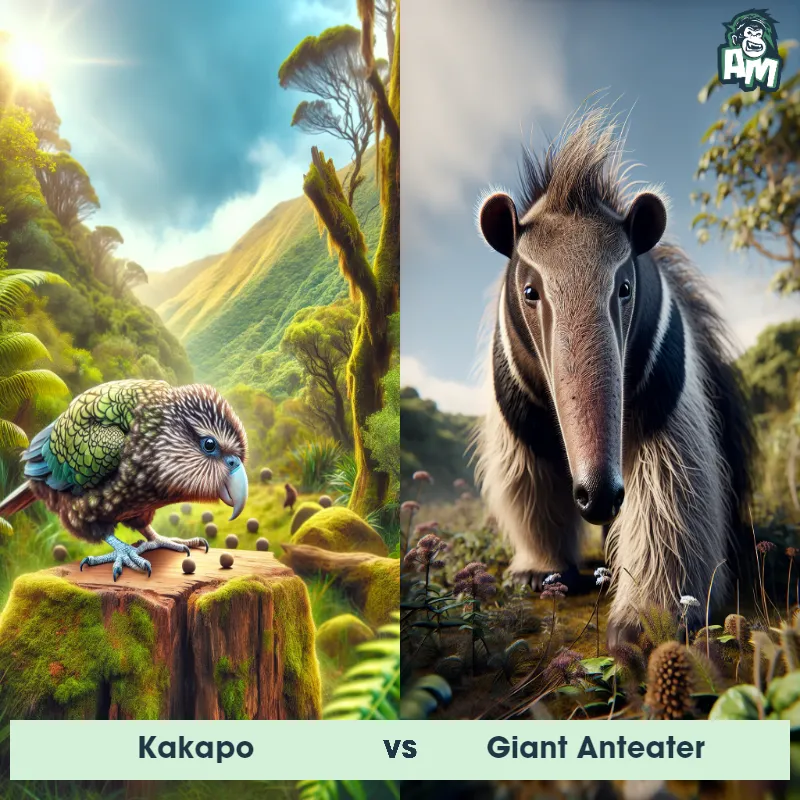The Giant Anteater
The Giant Anteater Myrmecophaga tridactyla is a fascinating mammal found in the tropical forests of Central and South America. It is known for its unique appearance, characterized by a long, tubular snout, a bushy tail, and large, curved claws. With a length of up to 7 feet 2.1 meters, including its tail, and weighing up to 80 pounds 36 kilograms, the Giant Anteater is the largest species of anteater. Its dense fur provides effective protection against ant bites while its snout and sticky tongue, which can extend up to 2 feet 60 centimeters, help it feed on its favorite prey - ants and termites.
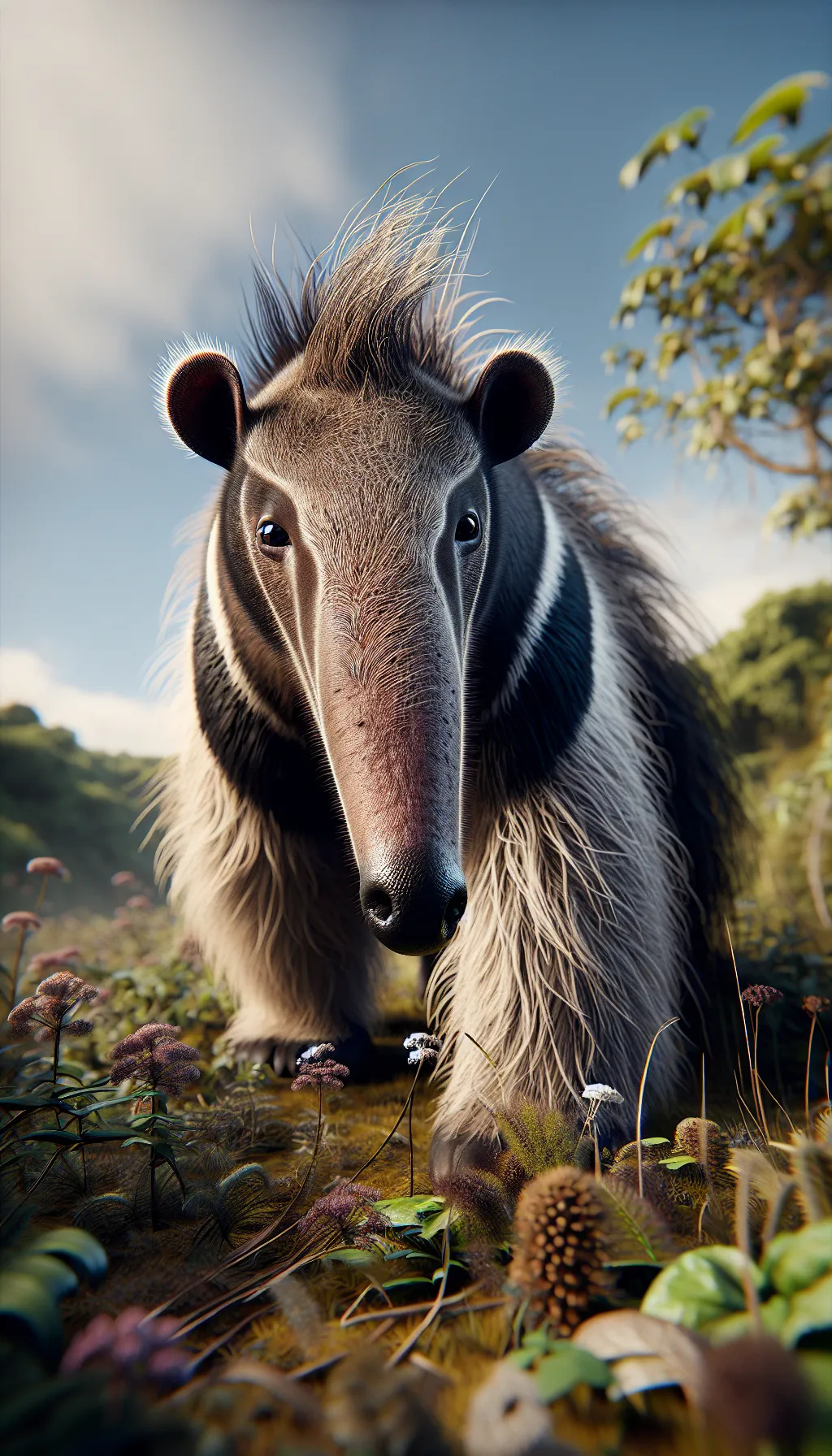
| Giant Anteater | |
|---|---|
| Size | Up to 7 feet (2.1 meters) |
| Weight | 40 to 140 pounds (18 to 64 kilograms) |
| Speed | 30 mph (48 km/h) |
| Key Strength | Sharp, powerful front claws |
| Biggest Weakness | Prefers flight over fight |
| Scientific Name | Myrmecophaga tridactyla |
| Family | Myrmecophagidae |
| Habitat | Grasslands, rainforests, savannas |
| Geography | Central and South America |
| Diet | Ants and termites |
| Lifespan | 10 years - 15 years |

The Giant Anteater
The Giant Anteater Myrmecophaga tridactyla is a fascinating mammal found in the tropical forests of Central and South America. It is known for its unique appearance, characterized by a long, tubular snout, a bushy tail, and large, curved claws. With a length of up to 7 feet 2.1 meters, including its tail, and weighing up to 80 pounds 36 kilograms, the Giant Anteater is the largest species of anteater. Its dense fur provides effective protection against ant bites while its snout and sticky tongue, which can extend up to 2 feet 60 centimeters, help it feed on its favorite prey - ants and termites.
Fun Fact: Despite their size, Giant Anteaters have poor eyesight and rely mainly on their sense of smell to locate their prey.
| Giant Anteater | |
|---|---|
| Size | Up to 7 feet (2.1 meters) |
| Weight | 40 to 140 pounds (18 to 64 kilograms) |
| Speed | 30 mph (48 km/h) |
| Key Strength | Sharp, powerful front claws |
| Biggest Weakness | Prefers flight over fight |
| Scientific Name | Myrmecophaga tridactyla |
| Family | Myrmecophagidae |
| Habitat | Grasslands, rainforests, savannas |
| Geography | Central and South America |
| Diet | Ants and termites |
| Lifespan | 10 years - 15 years |
Giant Anteater Matchups
We use AI to simulate matchups between the Giant Anteater and other animals. Our simulation considers size, strength, and natural predatory behaviors to determine the most likely outcome.
Giant Anteater: Diet, Predators, Aggression, and Defensive Behaviors
What do Giant Anteaters eat?
Giant Anteaters have a specialized diet that mainly consists of ants and termites. Their long, sticky tongue can extend up to two feet and is used to lap up insects from anthills and termite mounds. They have a keen sense of smell to locate their prey and can consume thousands of insects in a single day.
Do Giant Anteaters have any predators?
While adult Giant Anteaters have few natural predators due to their large size and powerful claws, young anteaters are vulnerable to predators such as jaguars, pumas, and large birds of prey. In some cases, humans may also hunt Giant Anteaters for their fur, meat, or as a result of conflicts over habitat.
Are Giant Anteaters aggressive?
Giant Anteaters are typically solitary and docile animals that prefer to avoid confrontation with other animals. However, they may exhibit aggression when threatened or cornered. They have sharp claws that they can use to defend themselves if necessary, but they generally prefer to retreat rather than engage in aggressive behavior.
Do Giant Anteaters fight?
Giant Anteaters are not known for engaging in physical fights with other animals, as they are more inclined to flee from potential threats. However, if cornered or provoked, they may use their powerful claws to defend themselves. Their primary mode of defense is to rear up on their hind legs and use their claws to strike out at their opponent.
How do Giant Anteaters defend themselves?
In addition to their sharp claws, Giant Anteaters have a few other defense mechanisms to protect themselves from predators. When threatened, they may emit a strong odor from their scent glands located near the base of their tail. This pungent smell acts as a deterrent to potential threats and can help ward off predators.
What is the biggest weakness of Giant Anteaters in a fight?
Despite their sharp claws and strong defensive capabilities, the biggest weakness of Giant Anteaters in a fight is their relatively slow speed and cumbersome movement. They are not built for speed or agility, making them vulnerable to faster and more agile predators. In a confrontation, a Giant Anteater's best defense is typically to use its claws to ward off an attacker or retreat to safety.
Fun Fact: The Giant Anteater possesses a specialized tongue that can flick in and out up to 150 times per minute, allowing it to capture up to 30,000 ants or termites in just one day.
Fun Fact: While their diet is primarily composed of insects, Giant Anteaters have been observed occasionally eating fruits and even small vertebrates such as lizards and snakes.



